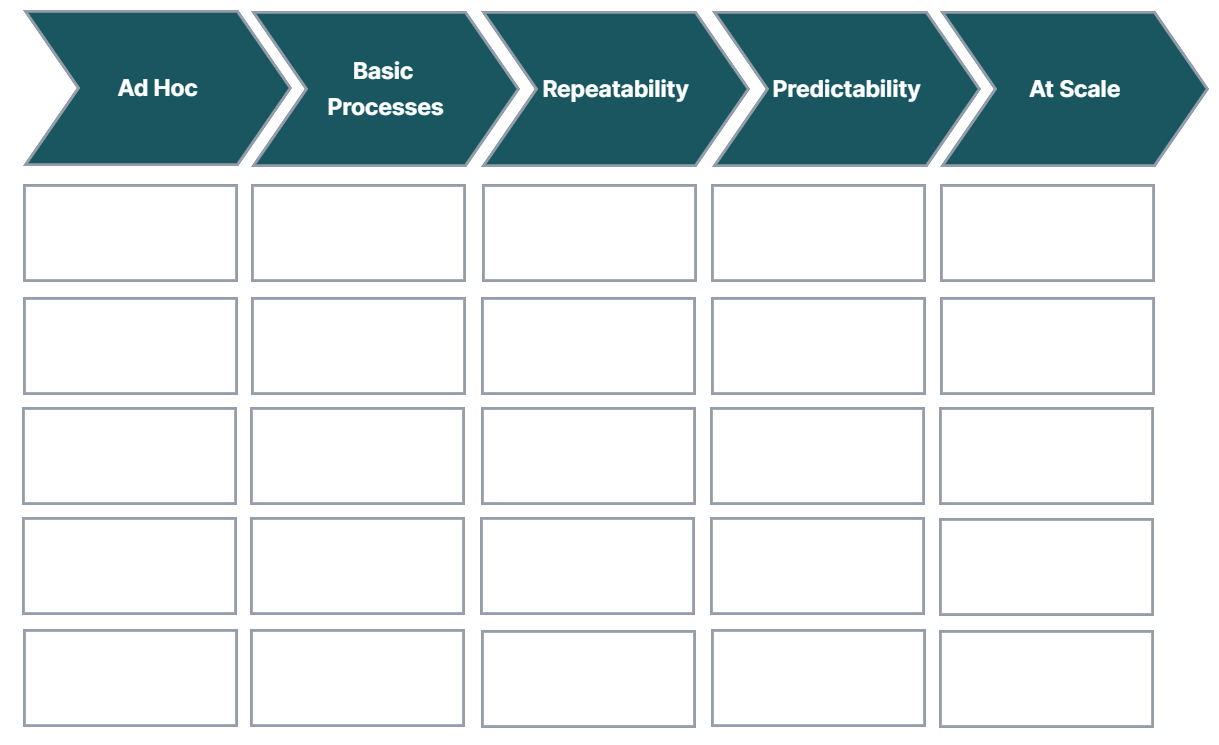
Scaling across Series A to C – TechCrunch

The T2D3 (triple, triple, double, double, double) acronym has become a well-known goal in the startup scene for achieving unicorn status. Formulating the goal can be easy, but realizing such tremendous revenue growth is notoriously difficult.
A study from Dealroom shows that about 16% of the companies that raise a seed round manage to raise a Series B investment, and only about 7% of those that raise seed funding raise a Series C investment.
This statistic is partially explained by a lack of a good organizational framework for scaling companies across seed to Series C. There is a lot of great content on the startup phase (getting to product-market fit) and success stories (raising hundreds of millions of dollars and multibillion dollar exits), but there is little available on how founders can grow a company from $1 million to $25 million in annual revenues (broadly defined as the Series A, B and C stages).
Based on 47 interviews with industry experts including Sean Ellis, Mark Roberge, Bill Macaitis, Micha Breakstone and Brian Requarth, desk research and our own experience as founders and investors in Series A to C companies, we have derived three major insights about how to scale a company from the organizational perspective. Here’s our framework:
Scaling is a continuum with maturity stages
A fast-scaling company with revenue of $5 million revenue has different scaling needs compared to a fast-scaling startup with $15 million in revenue. The concept of “maturity stages” for scaling a company can be useful to address the different needs.
The most common “maturity stages” of scaling a company are:
- Ad hoc.
- Basic process.
- Repeatable process.
- Predictable process.
- At scale.

Image Credits: Knight Capital
Typically, for a seed-stage company, everything is developed in a more or less ad-hoc manner. At the Series A stage, it’s more about developing repeatable processes. Series B and C are about predictability of outcomes. Beyond Series C, it’s about doing everything at scale.
Of course, this is a companywide view. As we argue below, this can be different for individual departments. For example, a company at a “repeatability” stage that generates inbound leads through digital marketing efforts and has an enterprise sales department will often have a much more mature marketing department compared to sales.
The takeaway is to initially figure out in which stage your company and departments are in and only do what is required for that stage.
The challenges to scaling
You scale a company, from an organizational perspective, by overcoming numerous challenges. We believe that these challenges can be largely categorized into five buckets:
- KPIs and data.
- People.
- Documentation and enablement.
- Processes.
- Tooling.
We believe it is best to approach these challenges on the departmental and subdepartmental levels to make it workable.
KPIs and data
Data-informed decision-making is particularly important in the T2D3 journey. It is important to realize that different KPIs are relevant at different stages. First, focus on the right metrics for your stage. An LTV:CAC metric (lifetime value to acquisition costs) is less relevant for a seed company than retention.
